Having warned you about plants on display that may be dead or dying, it would be sensible to mention a range of plants that are dormant (sleeping) when you buy them.
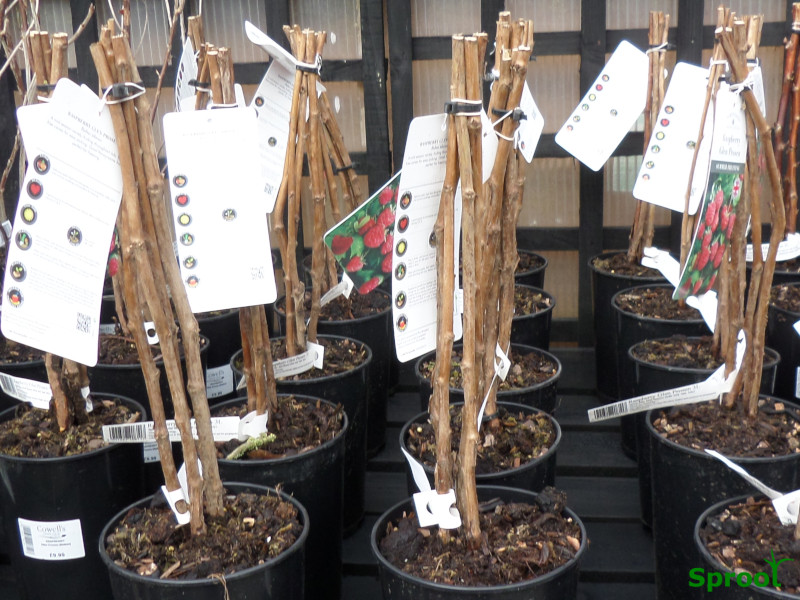
Before Garden centres came along nearly all the garden plants you bought would be dug up when dormant, usually October – March. They were packed in newspaper and delivered by post. When the plants arrived you would get something that resembled sticks with roots on. If you planted them straight away there was a good chance they would grow.
They are still available and are often called bare-root plants
Bareroot plants.
Why would you buy them?
They are much cheaper to produce and sell and can be good value if you need a lot of plants. You need to expect some of them to die but it can still be worthwhile.
Modern packing and delivery services are much better nowadays so the chances of survival have improved.
To show you what you can expect I bought a pack of 3 redcurrants from a well-known store for £2.49 which is only 83p each. They are only one year old so smaller than you would normally see in a garden centre. A two to 3-year-old plant in a pot would cost you from £4.99 to £8.99 so even if only one survives you will have saved money. You will have to wait a year longer for flowers and fruit.
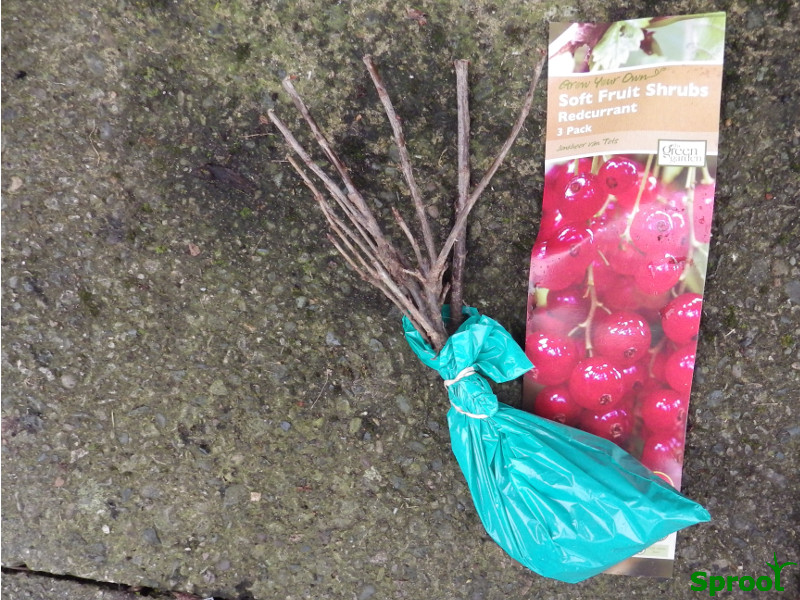
Redcurrant pack of three sold packed in a sleeve, the plastic sleeve has been removed
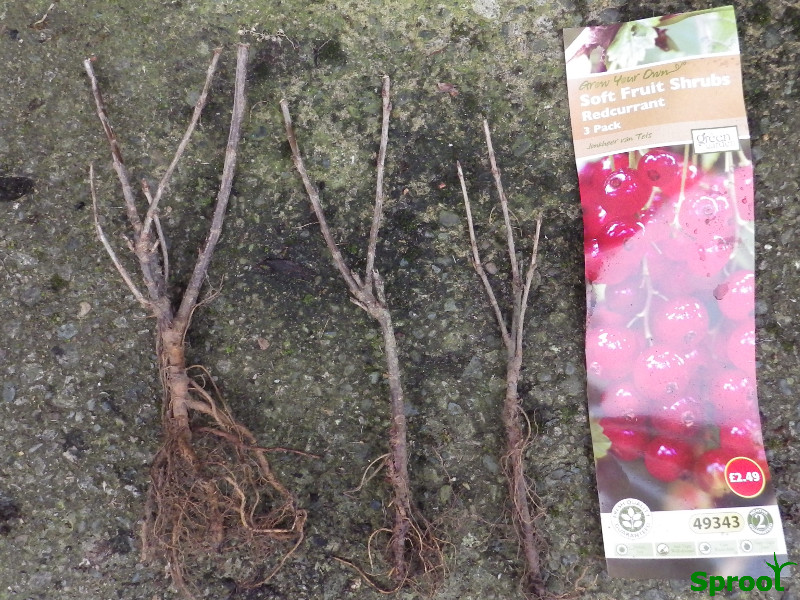
With the bag removed you can check the roots. As you can see it was a mixed bag one very good and two much smaller
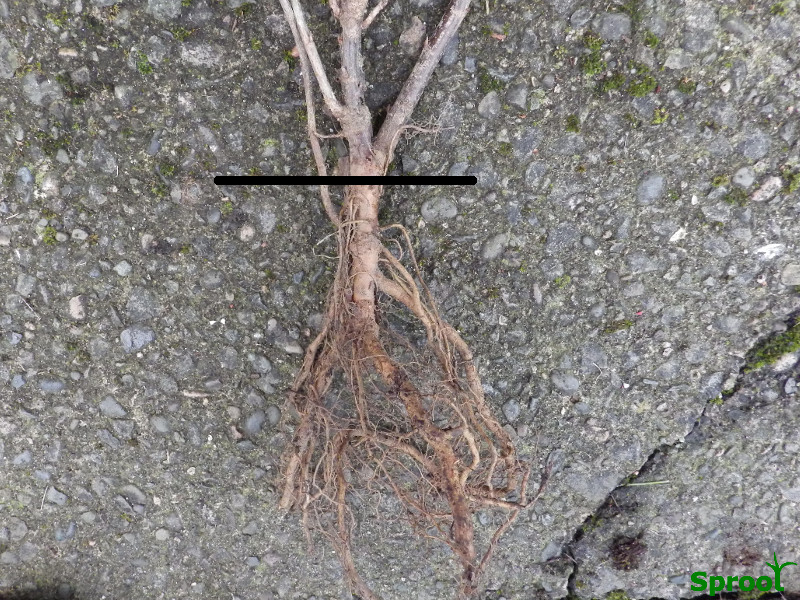
The good news is the roots are damp and look okay. Try to spot the original soil line and plant at the same depth
Packs of bareroot plants are often sold in supermarkets and stores in the spring they can be good value if you buy them as soon as they come in, don’t buy them if they have long spindly shoots
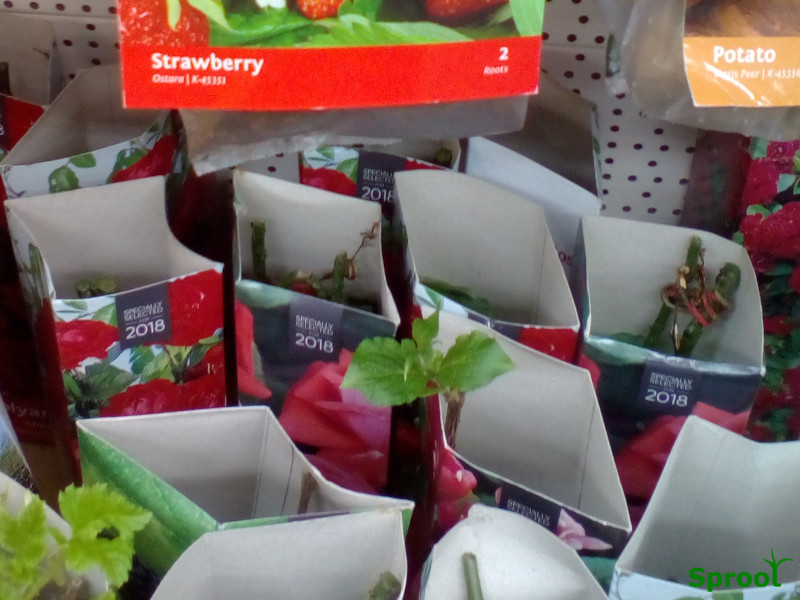
Pots of dead plants
In the winter and early spring, you might find pots of what looks like dead plants on sale. There are a lot of plants that appear to die in the autumn, this is quite normal they are basically sleeping through the winter ready to start again in the spring.
If they have been grown in a pot you will find what appears to be dead plants on sale. There are some things you can check.
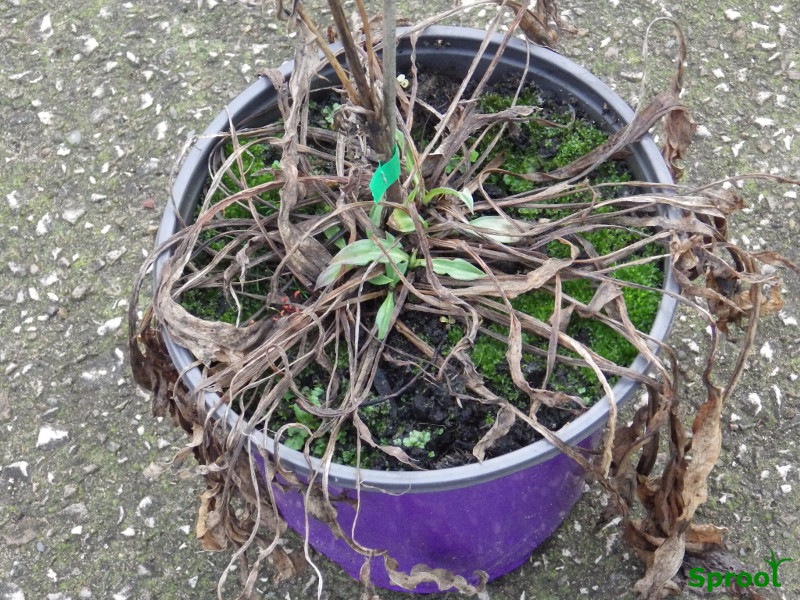
Scabiosa in winter covered in dead foliage
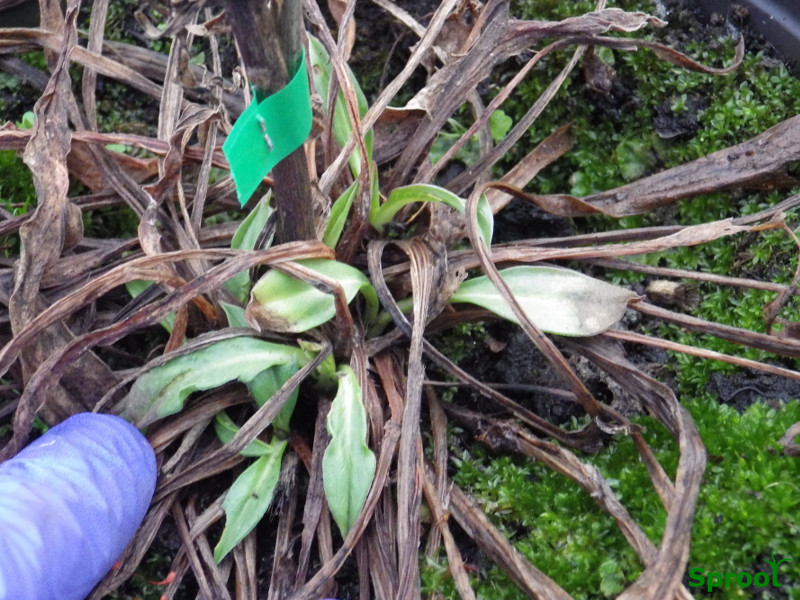
Closer inspection reveals lots of sleeping shoots
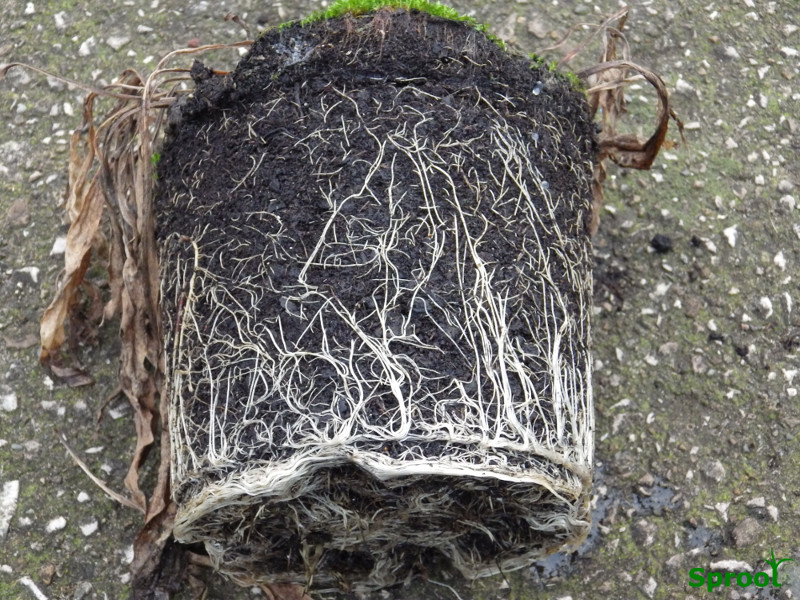
Always check the roots, looking good
Check the roots before buying.
You may find that the compost falls off the roots when you tip the plant out, this is a posh version of bare-root plants.
The grower has potted up a bare-root plant into a pot of compost in the winter, normally this would be grown on for 6 to 8 weeks in the spring to establish a good root system before it is delivered.
Sometimes they are sold straight away.
They are cheaper to produce this way, so they are often sold as special value or just too early in the spring before the roots have managed to fill the pot.
They can be good value but you need to plant them before the end of March or grow them on until the roots fill the pot before planting out.
The majority of Roses are grown this way, the plants are lifted in the autumn when dormant, quite often they are kept in a cold store to keep them dormant. Batches of plants are potted up through the spring to sell in flower later in the summer. If you buy them in late spring or through the summer they should always have a good pot full of roots.
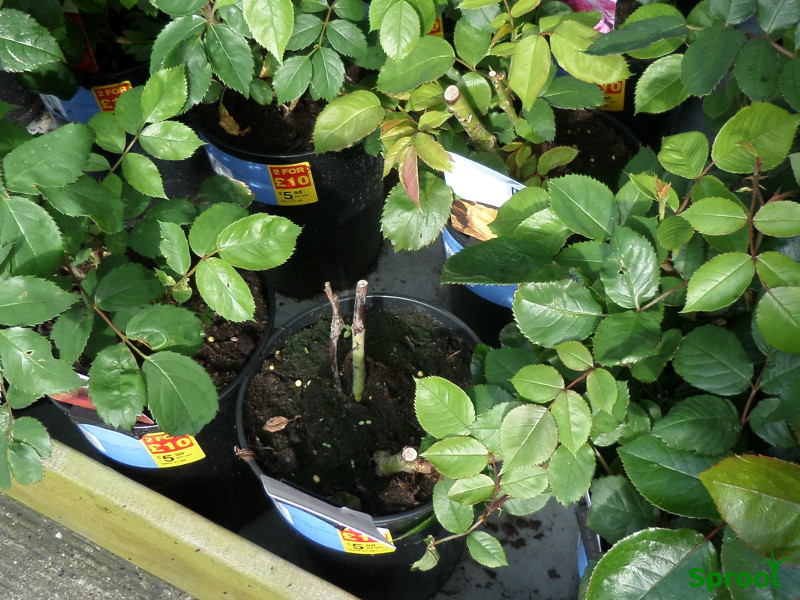
Some losses are expected when plants are delivered dormant.
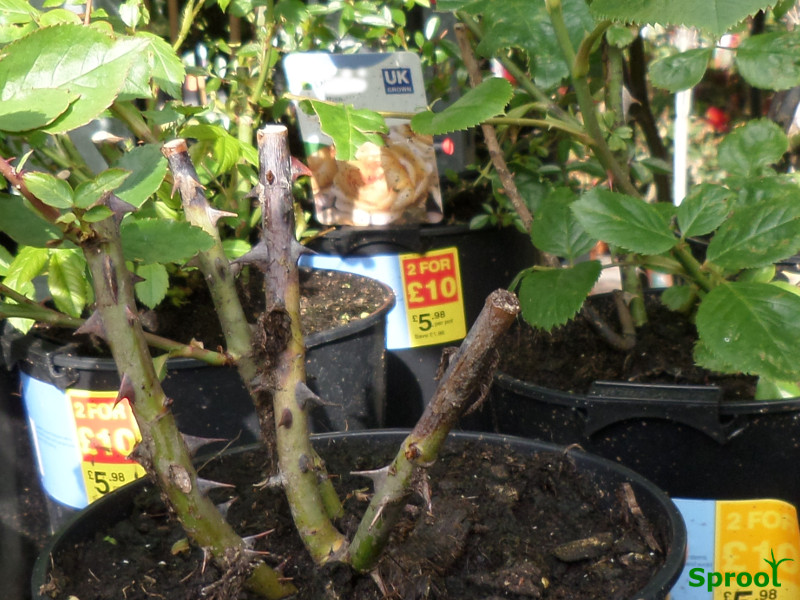
Some shoots may be alive, don’t choose one with uneven growth
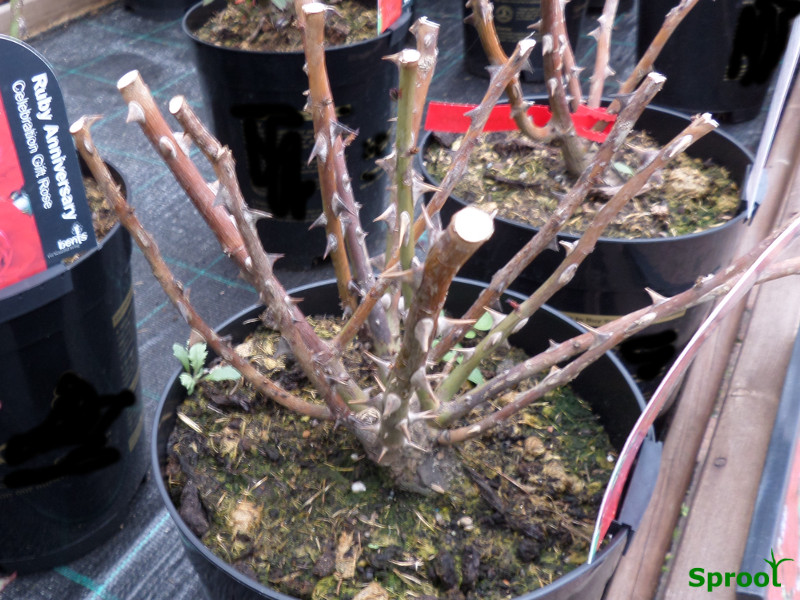
Even older plants can fail, by April new leaves should be showing.
Bulbs
Bulbs are also dormant plants, they are easy to grow but there are some things you should watch out for.
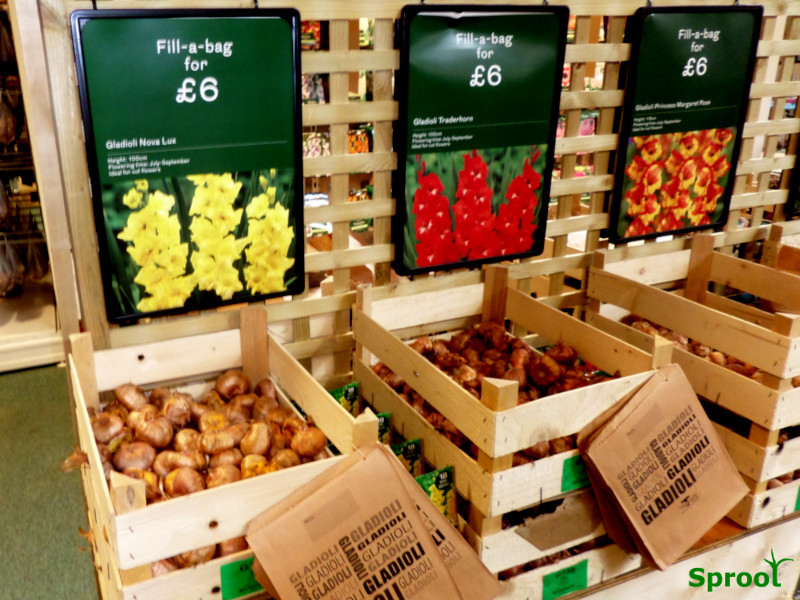
check out our guide to bulbs

